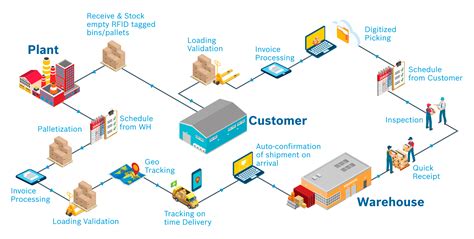Exploring the power of the supply chain solutions with Blockchain: the case of Chainlink (Link)
The world of finance has suffered a significant transformation in recent years, thanks to the emergence of cryptocurrencies and blockchain technology. Cryptocurrencies, such as Bitcoin and Ethereum, have interrupted traditional financial systems by providing an alternative means of exchange and reduce transaction costs. However, the value proposal extends far beyond simple money transfers, with supply chain solutions that use blockchain technology increasingly attractive.
What is a supply chain solution?
A supply chain solution refers to any process or system used to administer and optimize the flow of goods, services or information of raw materials to final customers. These solutions aim to increase efficiency, reduce costs and improve customer satisfaction by rationalizing processes, reduce waste and improve data accuracy.
Blockchain technology: a key component
Blockchain Technology is a distributed older book that allows the maintenance of safe, transparent and manipulation proof transactions. It allows multiple parties to participate in the network without the need for intermediaries or centralized authorities. This decentralized approach has several advantages over the traditional solutions of the supply chain:
- Increased safety : Blockchain cryptographic algorithms ensure that the data is safe and protected from unauthorized access.
- Transparency : All transactions are recorded in a major book, providing instant visibility throughout the supply chain process.
- Maintenance of immutable records : Data cannot be altered or deleted once it has been written in the block chain.
Chainlink case study (Link)
Chainlink is a decentralized Oracle network that allows a confidence and safe data exchange between different systems in the Blockchain network. In essence, Chainlink provides a “bridge” between intelligent contracts and external data sources, which allows developers to take advantage of a wide range of real world data while maintaining control over their own applications.
How Chainlink works
Chainlink’s architecture consists of three main components:
- Intelligent contracts : These are self-execution contracts with the terms of the agreement written directly in lines of code.
- Oracles : External data sources that provide relevant and updated information to intelligent contracts.
- Chain node : A node that connects users with external oracles, allowing them to access real world data.
Chainlink benefits in supply chain solutions

Blockchain technology integration with Chainlink has numerous benefits for supply chain solutions:
- Improved visibility : Real -time visibility throughout the supply chain process is now possible, allowing faster decision making and better customer satisfaction.
- Improved efficiency : Automation and rationalization of processes lead to significant costs in costs and marketing time.
- Increased data accuracy : Decentralized and confidence architecture of Chainlink guarantees that the accuracy of the data remains high, even in front of external external sources or unreliable.
Real world applications
Chainlink is being used in various industries, including:
- Supply chain management : Companies like Walmart and Toyota are taking advantage of Chainlink to improve their visibility of the supply chain and automate decision making.
- Financial Services : Banks and financial institutions are using Chainlink to ensure the exchange of data with external sources, such as payment processors and market data suppliers.
- Medical care : Medical care organizations are using Chainlink to access real world data on patient results, medication effectiveness and disease management.